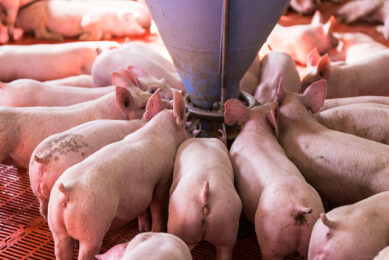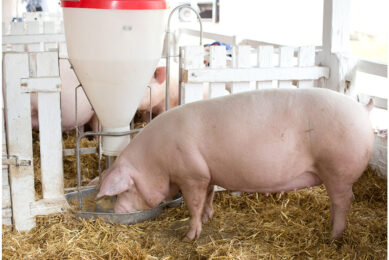Selecting the most effective toxin binder

As mycotoxin concerns arise, more and more toxin binder products are commercially available on the market. This can be confusing when selecting a product. Which technical and objective criteria could be used to select the most adapted product?
Mycotoxins are small and stable metabolites produced by fungi which can contaminate a wide variety of crops. The contamination of food and feed by mycotoxins is a global safety issue due to their adverse effects on human and animal health. For example, one main concern is the presence of aflatoxin M1 in dairy products, a highly nutritious food in developing countries. Aflatoxin M1 is classified by the International Agency for Research on Cancer as potentially carcinogenic to humans (Group 2B). In livestock, mycotoxins lead to important decreases in performance (growth, feed efficiency or reproduction issues) and consequently losses of revenue for farmers.
Tools to decrease mycotoxin bioavailability
A wide range of products is available on the market to counteract the negative effects of mycotoxins in the livestock industry. These products range from single mycotoxin adsorbing agents to more complete and elaborate products. One common point between these products is, at least, their capacity to ‘adsorb’ or ‘bind’ mycotoxins, in order to decrease mycotoxin bioavailability within the animals and to reduce their absorption in the systemic circulation.
Objective and reliable criteria to select products
Over the past few years, there has been an increasing knowledge on mycotoxins pathogenic potential (co-contamination, impact on animal health and productivity, interaction in gut). In the meantime, the abundance of available products on the market, with variable physicochemical and biological properties, brings complexity and sometimes confusion for the selection of products. It appeared necessary to find objective and reliable criteria to select products with the best potential to limit mycotoxins effects on animals. After years of research on the subject, Mixscience highlighted five key criteria to evaluate the efficacy of the products:
- Adsorption capacity towards a wide range of mycotoxins, in various pH conditions
- Adsorption capacity towards other toxins
- Specificity
- Velocity
- Strict control plan of products.
These criteria are mainly based on in vitro analysis, which are powerful tools to screen products before in vivo studies.
Adsorption capacity toward a mycotoxin
Toxin binding capacities can differ significantly between one product to another, due to the complex and diverse structure of adsorbing materials and the variety between the different mycotoxins. Aflatoxins have received much attention due to their frequent occurrence in agricultural commodities and health issues in a wide variety of animals. However, the occurrence and negative impact of various other mycotoxins and the reality of co-contamination strengthen the consideration that a product should bind a wide number of mycotoxins. Moreover, the conditions of the action site of the product are important to consider. For example, pH values vary greatly along the digestive tract of animals, from acidic conditions (pH 3 or 4) to more basics ones (pH 6 or 7). Binding capacities of products may be influenced by pH changes, leading to the risk that the toxins are adsorbed at one part but released at another part of the digestive tract.
Adsorption capacity toward other toxins
Some products have also demonstrated the capacity to bind more than toxins produced by fungi, which may help the animal to fight against various stress occurred in their environment. Bacterial toxins, which can be involved in various diseases such as colibacillosis, necrotic enteritis in poultry or neonatal diarrhoea in piglets, may also be bound by some products. This is interesting in a context of bacterial resistance because the targets are the metabolites of the bacteria and not the bacteria themselves. It is also recommended to test these compounds (endo and exotoxins), in order to provide maximum protection to animals.
Highest toxin adsorption capacity
As far as possible, in vitro studies should verify the adsorption capacity of a product on several types of microbial toxins, in different pH conditions. Figure 1 illustrates the mycotoxin adsorption capacity of two commercial products, tested at maximum recommended dosage (product 1 = Multiprotect at 0.3% and product 2 at 0.2%), on five mycotoxins : aflatoxin B1 (AFB1), zearalenone (ZEA), fumonisin (FUM), T2-toxin (T2), ochratoxin (OTA) and toward bacterial toxins at pH7. Considering mycotoxins and bacterial toxins, product 1 showed the highest toxin adsorption capacity and the widest spectrum of activity.
Specificity
One objection to the use of toxin binders is their potential side effects on feed components. It is true that some materials have been reported to be relatively unspecific adsorbents which may adsorb essential nutrients. As an example, activated charcoal demonstrated adsorption capacity toward a broad range of mycotoxins in vitro, but also toward some vitamins and minerals. It is recommended to verify that the in vitro adsorption of macro and micro-elements of the product is minimal before selecting it.
Respective adsorption percentages of vitamin B6 and phosphorus were less than 5% and 0% for the commercial product and 40% and 2% for activated charcoal
A study aiming at evaluating the binding properties of a commercial product (product 1 = Multiprotect at 0.2%) and activated charcoal toward vitamin B6 and phosphorus at pH 7, used a vitamin and minerals model. Respective adsorption percentages of vitamin B6 and phosphorus were less than 5% and 0% for the commercial product and 40% and 2% for activated charcoal. Multiprotect showed minimal risk of interaction with important elements from feed, conversely to activated charcoal.
Velocity of adsorption
The bioavailability of mycotoxins, correlated to their absorption on the digestive tract of the animal, is very diverse according to the type of mycotoxin and the animal species. In monogastrics, AFB1 and ZEA are rapidly absorbed in the proximal part of the digestive tract while other mycotoxins such as FUM are poorly absorbed. For the mycotoxins which are quickly absorbed, it is necessary to select a product which acts in a few minutes. An in vitro study aiming at verifying the binding properties toward AFB1 (1000 ppm) and ZEA (1000 ppm) of a commercial product (Multiprotect at 0.2%) after 1 min, 5 min and 10 min at pH 4, have shown that Multiprotect was efficient for speed of mycotoxins adsorption. Indeed, nearly 98% and 68% of AFB1 and ZEA were adsorbed with the commercial product after only 1 min.
A quality certificate is essential and represents a guarantee of product safety
Strict control plan of products
Finally, it is important to verify that the products are safe for animals, consumers and the environment. A strict control plan policy is mandatory with toxin binders which usually includes natural clays which are not risk-free, notably because of contamination to heavy metals or dioxins for example. A quality certificate is essential and represents a guarantee of product safety.
Making an informed decision
The five criteria which have been identified should be considered when selecting a mycotoxin binder product. These criteria participate to a better knowledge of the products, which are essential to satisfy feed manufacturer expectations i.e. a product with adsorption capacity toward a wide range of toxins, with fast adsorption, without desorption properties and which are safe for the animals. Also, economical aspects and favourable effects on animal health are considered.
Authors: Clarisse Techer, RID manager and Clémence Messant, Product manager, Mixscience
Information only for export outside of the European Union, USA and Canada.
 Beheer
Beheer





 WP Admin
WP Admin  Bewerk bericht
Bewerk bericht